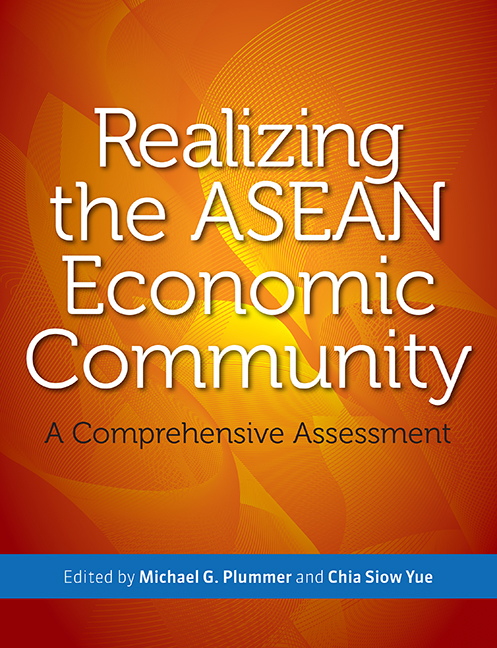Book contents
- Frontmatter
- Contents
- Illustrations
- Foreword
- Executive Summary
- Acknowledgements
- About the Contributors
- 1 Introduction
- 2 Regional Market for Goods, Services, and Skilled Labor
- 3 Competition Policy, Infrastructure, and Intellectual Property Rights
- 4 The AEC and Investment and Capital Flows
- 5 Narrowing the Development Gap in ASEAN
- 6 Competitiveness and Leverage
- 7 Benefits of the AEC
- References
- Appendix A AEC Components
- Appendix B The CGE Model
- Appendix C Developments in Logistics and Aviation
- Appendix D AEC Blueprint Excerpt
- Appendix E ASEAN Free Trade Agreements
- Appendix F ASEAN Member States' Free Trade Agreements
- Appendix G ASEAN Imports and Exports, 2000 and 2006
- Index
1 - Introduction
Published online by Cambridge University Press: 21 October 2015
- Frontmatter
- Contents
- Illustrations
- Foreword
- Executive Summary
- Acknowledgements
- About the Contributors
- 1 Introduction
- 2 Regional Market for Goods, Services, and Skilled Labor
- 3 Competition Policy, Infrastructure, and Intellectual Property Rights
- 4 The AEC and Investment and Capital Flows
- 5 Narrowing the Development Gap in ASEAN
- 6 Competitiveness and Leverage
- 7 Benefits of the AEC
- References
- Appendix A AEC Components
- Appendix B The CGE Model
- Appendix C Developments in Logistics and Aviation
- Appendix D AEC Blueprint Excerpt
- Appendix E ASEAN Free Trade Agreements
- Appendix F ASEAN Member States' Free Trade Agreements
- Appendix G ASEAN Imports and Exports, 2000 and 2006
- Index
Summary
At the Twelfth ASEAN Summit in Cebu in January 2007, ASEAN decided to create an ASEAN Economic Community (AEC) by 2015. This milestone reflects growing awareness that ASEAN must deepen and hasten its economic integration in order to cope with serious challenges. The end of the Cold War, thawing relations among countries in Northeast Asia, and the economic rise of China and India are testing ASEAN's traditional role in regional cooperation and its economic competitiveness even as member state governments struggle to ensure political and social stability as well as inclusive and sustainable growth. In addition, the financial crisis of 2008 — itself partly the result of insufficient cooperation in addressing global imbalances — revealed ASEAN's stark vulnerability to shocks it did little to create.
How can deeper economic integration help ASEAN and member states weather these challenges? Integration is expected to promote regional economic resilience and the delivery of regional public goods; raise the international competitiveness of individual Southeast Asian countries that must be able to compete, particularly against China and India in the global marketplace; and give the region “one voice” in shaping the mechanisms necessary to contain and manage economic crises whatever their origin. In short, to maintain its traditional role and the competitiveness of member states ASEAN must keep the “economic center of gravity” from shifting rapidly to the north by proceeding with its ambitious plans for an AEC.
The process for achieving the AEC by 2015 is critical. ASEAN Member States have fewer than seven years to execute a complicated reform agenda (see Appendix A for a summary of AEC components). That short time span has led to cynicism among detractors, but ASEAN did well to establish a timeframe for erecting various aspects of a single market and production base — and in getting member states to gauge progress on compliance “scorecards.” From an economic viewpoint, however, the top priority should be putting in place the correct policies for a unified market.
- Type
- Chapter
- Information
- Realizing the ASEAN Economic CommunityA Comprehensive Assessment, pp. 1 - 19Publisher: ISEAS–Yusof Ishak InstitutePrint publication year: 2009



